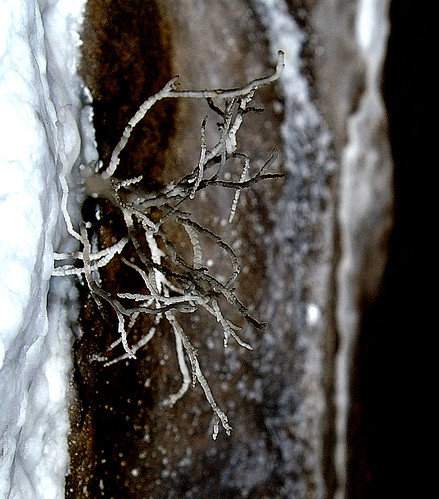There are certainly cases where draught
is a significant factor, as there are places where large numbers of helictites are arrayed in broad parallel and it is difficult to think of a directional force, apart from gravity of course, which would otherwise be capable of producing this effect. However, it is clearly not always the dominant force and the fact remains that the one identifying feature of helictites (and heligmites of course) is that their growth pattern is affected mainly by a force other than gravity.
Two further points about the wind, the term
anemolite can be used to describe stal that has been directionally affected by draughts and secondly, if the affect is due to asymmetric evaporation then it seems likely that the helictites will point into the wind rather than away from it.
In certain Aussie caves (especially) you can find
large stalagmites whose growth is oriented by the light falling upon them. I suspect that most people would find these a bit too massive to be described as heligmites, though.






